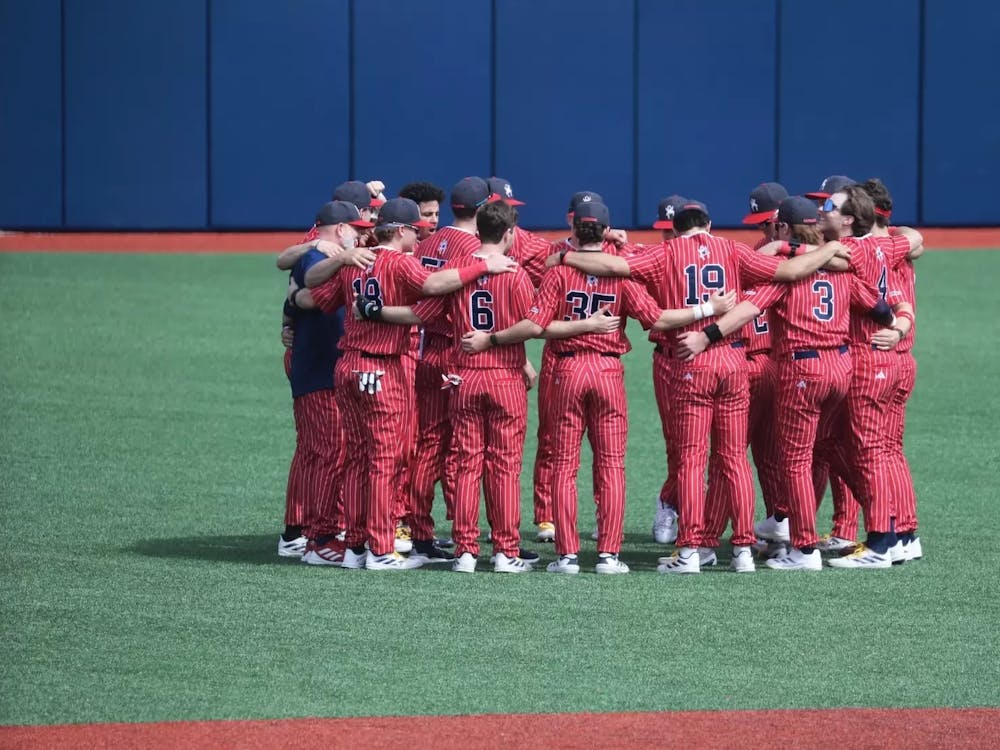At The Collegian, we want to write stories that matter to you. We asked readers to send in their questions and burning curiosities about the University of Richmond. No topic was too big or too small. We picked five of them, and our reporters have found the answers for you. One question and answer will be published each day this week. Read the other stories in the series here. And keep being curious.
Where does campus recycling go?
To find the answer, I spoke with Rob Andrejewski, UR’s director of sustainability.
Many students are probably familiar with the big green Waste Management trucks on campus. Waste Management is the university's trash and recycling vendor. The university contracts with the company, and it takes recycled materials from campus to county waste material recovery and then to the Tidewater Fibre Corporation Recycling facility in Chester, Virginia.
To find out exactly what happens to our recycling, I took a tour of the TFC Recycling facility in Chester, about 30 minutes from UR’s campus. I received a full tour of their facilities as well as an educational presentation on what exactly can be recycled.
The plant is semi-automated, meaning that there are machines as well as people who sort through the recyclables. When a truck reaches the facility, it dumps the materials onto a tipping scale.
From there, the materials are put onto a conveyor belt. Employees them by hand to get rid of contaminated materials that they cannot use, which they will send to the landfill. Once materials are sorted, they go on a material conveyor belt where workers sort through the different types of items.
Air machines and conveyor belts are then used to sort materials further. After sorting is completed, each group of materials is bailed together in a large cube. A bail is a large cube of recycled materials, which consists of compressed plastic waste. Glass bottles and jars are broken into small pieces and are shipped to places to be made into new bottles.
After materials are bailed, they are sold as commodities to companies where they can be made into new items. Aluminum cans are usually made into more aluminum cans. A lot of the aluminum that goes through the TFC Recycling plant is sold to Anheuser-Busch, a brewing company which has a plant in Williamsburg, Virginia.
Plastics can be made into clothing, pellets or carpets. Materials such as plastic and aluminum are sold to places in the United States. Paper and cardboard are sold and sent overseas to Indonesia, the Netherlands and India. It is less expensive to send the paper and cardboard materials overseas than to keep them in the U.S.
Andrejewski said one of our biggest issues on campus in terms of recycling was cups from 8:15 at Boatwright. Many students throw away their drinks with liquid still inside. If any of the liquid gets onto the paper products, it contaminates the entire recycling bag, which then has to be thrown out.
On campus, there is a recycling initiative called “Rethink Waste.” This initiative followed a year of thinking about our waste stream: what items are disposable, what we are throwing away, how it is being distributed internally and where it gets called to.
Enjoy what you're reading?
Signup for our newsletter
Andrejewski emphasized that a major part of the initiative is “know where it goes.” He said it was important to get rid of the concept of "away" because there is no away. The item will either go into the landfill or it will go to recycling.
For the implementation of the Rethink Waste initiative on campus, there have been new signs, bags and bins put in place across campus with consistent colors and images to help students identify which items go in the trash and which go in the recycling. This process began last year, and the campus-wide roll-out will be finished in 2020. Eventually, there will be composting on campus, but the university is not ready for that yet because it needs to establish recycling first, Andrejewski said.
The goal is to have 75 percent of our materials diverted from landfills, Andrejewski said. Currently, the university is sending about 60 percent of its materials to the landfill and 37.5 percent going to recycling and donations. As a campus, it is getting better at donating items instead of throwing them away, he added.
“I want people to know that when they are getting rid of something, it might have a value to someone else," he said. "When it is not, I want them to find the right bin for it, and our job is working on making that as easy as possible.”
Contact lifestyle writer Addie Kline at addie.kline@richmond.edu.
Support independent student media
You can make a tax-deductible donation by clicking the button below, which takes you to our secure PayPal account. The page is set up to receive contributions in whatever amount you designate. We look forward to using the money we raise to further our mission of providing honest and accurate information to students, faculty, staff, alumni and others in the general public.
Donate Now



